A weed can be any plant that is a threat to agriculture, industry, the environment, human health or the community and has the potential to spread to other areas. Weeds smother native vegetation and affect the biodiversity of our natural areas. Weeds also reduce habitat for native fauna and choke waterways.
Information on how to identify and control weeds can be found at NSW WeedWise as well as Sydney Weeds Network. For fact sheets showing simple weed removal techniques visit Weed removal fact sheets.
In NSW all landholders have a general biosecurity duty under the NSW Biosecurity Act 2015 to prevent, eliminate or minimise any biosecurity risk a weed may pose.
Weeds on Council land
Georges River Council is committed to protecting our natural areas by managing weeds. We do this through:
- Coordinated weed control programs with staff, contractors and our Bushcare volunteer program.
- Conducting weed inspections on public and private property.
- Inspecting and controlling weeds in high risk pathways.
- Providing education, training and resources on weed management.
- Administering and ensuring compliance with the Biosecurity Act.
Council is following the objectives and strategies set out in the Greater Sydney Regional Strategic Weed Management Plan. Any weed identified as a priority weed under the Plan is a priority in weed in Georges River Council area.
Weeds that are not priority weeds are still managed by council but we concentrate our efforts on areas of high ecological value such as endangered ecological communities and volunteer Bushcare sites.
Weeds on a Neighbours property
The quickest and most effective way of dealing with weeds on your neighbours’ property is to talk to them and try and resolve any issues together.
If you can't resolve the issue with your neighbour amicably, contact the Community Justice Centre to arrange for mediation. Some weeds may be dealt with under the Trees (Disputes Between Neighbours) Act including Bamboo and any plant that is a vine. You may wish to obtain independent legal advice if you believe a plant is creating a legal nuisance.
Council’s Biosecurity Officer will inspect any properties for priority weeds and contact landholders regarding control of any priority weeds.
What can you do?
- Join a local Bushcare group and help care for our local Bushland areas.
- Remove weeds from your own garden and choose plants that do not become weeds in Bushland. Local native plants are the best choice. You can check your choice of plant at Gardening Responsibly to see which plants have a low invasive risk. Grow Me Instead also has information on alternatives to weedy garden plants.
- Contact us to report a priority weed, if you need help identifying a weed or need advice on weed control methods.
You can also contact the Department of Primary Industries via the NSW Invasive Plants and Animals Enquiry Line on 1800 680 244 or weeds@dpi.nsw.gov.au.
Priority weeds that are being targeted for control in our LGA
-
Cat's Claw Creeper - Dolichandra unguis-cati
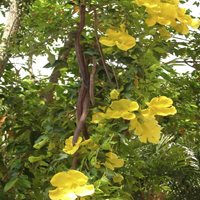 Description: woody vine with many stems that forms dense mats and climbs over shrubs and trees, trees. Tendrils are three-pronged and hooked, resembling a cat's claw. Roots are extensive and deep.
Description: woody vine with many stems that forms dense mats and climbs over shrubs and trees, trees. Tendrils are three-pronged and hooked, resembling a cat's claw. Roots are extensive and deep.
Flowers: yellow often with orange lines inside the tube. Single or in small clusters in spring.
Fruit/Seed: Seed pods are long and bean like. Green ripening to brown. The seeds are papery and winged.
Dispersal: seeds are spread by wind and water. Tubers and stems can reproduce and may be spread by flood or machinery.
For more information on Cat's Claw Creeper, visit NSW WeedWise.
-
Alligator Weed - Alternanthera philoxeroides
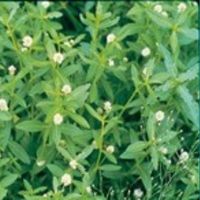 Description: floating or rooting emergent perennial herb with a brittle, fleshy taproot, forming large mats of interwoven roots and stems.
Description: floating or rooting emergent perennial herb with a brittle, fleshy taproot, forming large mats of interwoven roots and stems.
Flowers: silvery white flowers in January to March.
Fruit/Seed: seeds produced but rarely viable in Australia.
Dispersal: stems dispersed by water flow, dumping and machinery.
For more information on Alligator weed, visit NSW WeedWise.
-
Ludwigia - Ludwigia peruviana
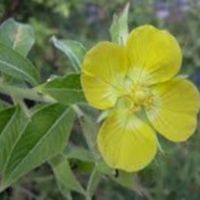 Description: a perennial shrub growing up to 3 meters high. It behaves as a deciduous plant and loses its’ leaves in Winter. The stems are hairy when young and the leaves are arranged alternately, are also hairy and have prominent veins.
Description: a perennial shrub growing up to 3 meters high. It behaves as a deciduous plant and loses its’ leaves in Winter. The stems are hairy when young and the leaves are arranged alternately, are also hairy and have prominent veins.
Flowers: single, bright yellow flowers, 2-4 cm across. They grow in the fork of upper leaves.
Fruit/Seed: oblong hairless fruits 1-3.5cm long contain numerous tiny seeds. The fruits turn light brown.
Dispersal: seeds spread by water, wind. Stems detach during floods.
For more information on Ludwigia, visit NSW WeedWise.
-
Spanish Broom - Spartium junceum
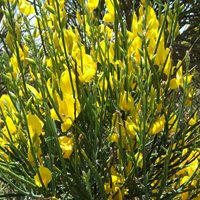 Description: A deciduous shrub that grows to 5m with leafless stems. Toxic to humans.
Description: A deciduous shrub that grows to 5m with leafless stems. Toxic to humans.
Flowers: Yellow pea-like flowers with a sweet fragrance.
Fruit/Seed: Flat green pods turning brown.
Dispersal: Seeds spread by machinery and deliberate planting. Must not be sold or traded in Greater Sydney,
For more information on Spanish Broom, visit NSW WeedWise.
-
Boneseed - Chrysanthemoides monilifera ssp. monilifera
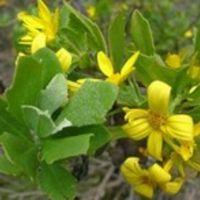 Description: shrub to 3m, an erect , upright plant with coarsely toothed leaves.
Description: shrub to 3m, an erect , upright plant with coarsely toothed leaves.
Flowers: golden yellow, daisy flowers, appearing in spring to early summer.
Fruit/Seed: purplish black berries, occurring in clusters and ripening in summer.
Dispersal: Birds.
For more information on Boneseed, visit NSW WeedWise.
-
Scotch Broom - Cytisus scoparius subsp. scoparius
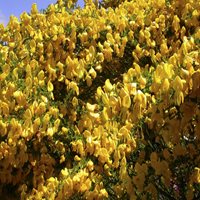 Description: Upright shrub with upper stems having five pronounced ridges. Leaves are softly hairy. Spanish Broom is toxic to humans.
Description: Upright shrub with upper stems having five pronounced ridges. Leaves are softly hairy. Spanish Broom is toxic to humans.
Flowers: Flowers are yellow and pea-like.
Fruit/Seed: Brown to black seed pods with hairs on the margins.
Dispersal: Machinery and contaminated soil. Seed can remain viable in the soil for many years.
For more information on Scotch Broom, visit NSW WeedWise.
Bamboo
Thank you for your feedback.